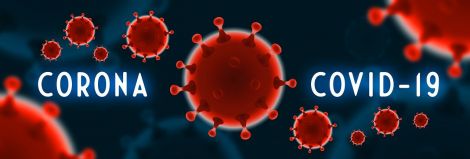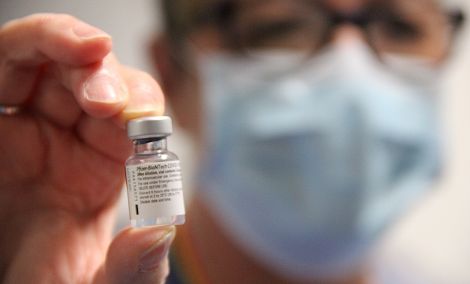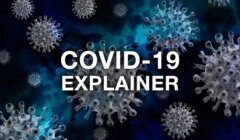Coronavirus / Pfizer and Moderna Covid-19 vaccines – the first of its kind
AS MENTIONED in previous articles, there are three Covid-19 vaccines currently licensed in the UK. In this article, professor Deborah Briggs takes a closer look at two of those vaccines that were developed using a similar type of technology.
For ease of discussion, I will refer to each of these vaccines by the name of their manufacturer, either Pfizer or Moderna.
However, for those readers that want to know a bit more information about the scientific names of these two vaccines, I include this additional information: The vaccine known as BNT162b2 was developed and produced by the companies Pfizer & BioNTech. The vaccine known as mRNA-1273 was developed and produced by the company Moderna in collaboration with the Vaccine Research Center within the National Institutes of Health (NIH) in the USA.
The Pfizer and Moderna vaccines are the first licensed mRNA vaccines for use in humans anywhere in the world. However, research into the use of mRNA to produce safe vaccines has been ongoing for many years and significant amounts of published information has proven that mRNA vaccines are safe as well as effective.
We might begin with a very brief explanation of exactly what mRNA really is. The long name for RNA is ribonucleic acid.
There are three types of RNA molecules in our bodies. Each type of RNA plays a crucial role in telling the cells in our bodies what they need to do or what types of products that they need to make. The type of RNA used to produce Pfizer and Moderna vaccines is called ‘messenger’ RNA or mRNA for short.
mRNA is appropriately named because its sole purpose is to take a message, revealing the exact protein construction of the SARS-Cov-2 virus spike protein, to the manufacturing center of the cell so that the cell can make an exact replica of that spike protein.
Become a member of Shetland News
So, exactly how are mRNA vaccines produced and how do they work to protect us against infection?
The active component of the Pfizer and Moderna vaccines is a very small piece of mRNA surrounded by a layer of fat called a ‘lipid’. This combination of mRNA surrounded by lipid is called a ‘nanoparticle’. The piece of mRNA in the Pfizer and Moderna vaccines holds the genetic code for the spike protein of the virus that causes Covid-19 (SARS-Cov-2).
Once we receive one of these vaccines there are six basic steps in our body’s process to develop the type of antibodies that we will need to protect us against infection as follows:
- The lipid nanoparticle containing the mRNA in the vaccine is taken up by the cells that are a part of our immune system;
- Once the lipid nanoparticle is inside one of our cells, the mRNA carrying the genetic code for the spike protein of the SARS-Cov-2 virus is released;
- The mRNA tells the cell how to produce the spike proteins of the SARS-Cov-2 virus;
- The spike proteins of SARS-Cov-2 that are produced by our cells are formed into a three-part structure known as a ‘trimer’;
- Once formed, the ‘trimer’ spike protein is pushed out onto the cell surface where other cells in our immune system can see and recognize it. Once this happens, our immune system begins to produce antibodies that will be able recognise the spike protein of the SARS-Cov-2 virus.
So, when and if we are exposed to Covid-19, those antibodies are already in our bodies and ready to kill or inactivate the virus and prevent or at least reduce the symptoms of Covid-19; - Lastly, the mRNA from the vaccine nanoparticle is destroyed and gone forever.
A very brief summary of the published data from the Pfizer and Moderna clinical trials indicates that both vaccines are effective after one dose, but the second dose increases its effectiveness against the initially identified variant of SARS-Cov-2 to approx. 95 per cent.
Both vaccines produce relatively few reactions after administration and these may include soreness at the injection site, tiredness, etc. There have been a handful of more serious adverse reactions reported with the Pfizer vaccine.
The length of immunity after vaccination is not known basically because the vaccines are new and there are no data on the duration of immunity as yet.
Data just published in the New England Journal of Medicine on 18 February indicates that both the Pfizer and Moderna vaccines have a reduced antibody response to the South African variant of the SARS-Cov-2 virus. We are still waiting on more information about how effective these vaccines are against the Brazilian variant.
As mentioned in my last article, the virus that causes Covid-19 will continue to undergo changes in its genetic makeup.
The manufacturers that have produced the three Covid-19 vaccines licensed in the UK are already working on adapting their vaccines to improve efficacy against the ever-changing SARS-Cov-2 virus.
The good news is that the very same modern technology that has enabled Covid-19 vaccines to be developed and produced so quickly in the past year has the advantage of being able to be rapidly adapted to improve the vaccine’s effectiveness against newly identified variants.
Professor Deborah Briggs has served as an expert to the World Health Organisation in the field of rabies prevention. She has provided expertise in the field of vaccine production and clinical trials for major pharmaceutical companies and continues to teach an online graduate level course in Global Public Health for Kansas State University. She lives in Bridge End, Burra.
More from Professor Briggs:
Become a member of Shetland News
Shetland News is asking its many readers to consider paying for membership to get additional features and services: -
- Remove non-local ads;
- Bookmark posts to read later;
- Exclusive curated weekly newsletter;
- Hide membership messages;
- Comments open for discussion.
If you appreciate what we do and feel strongly about impartial local journalism, then please become a member of Shetland News by either making a single payment, or setting up a monthly, quarterly or yearly subscription.




































































